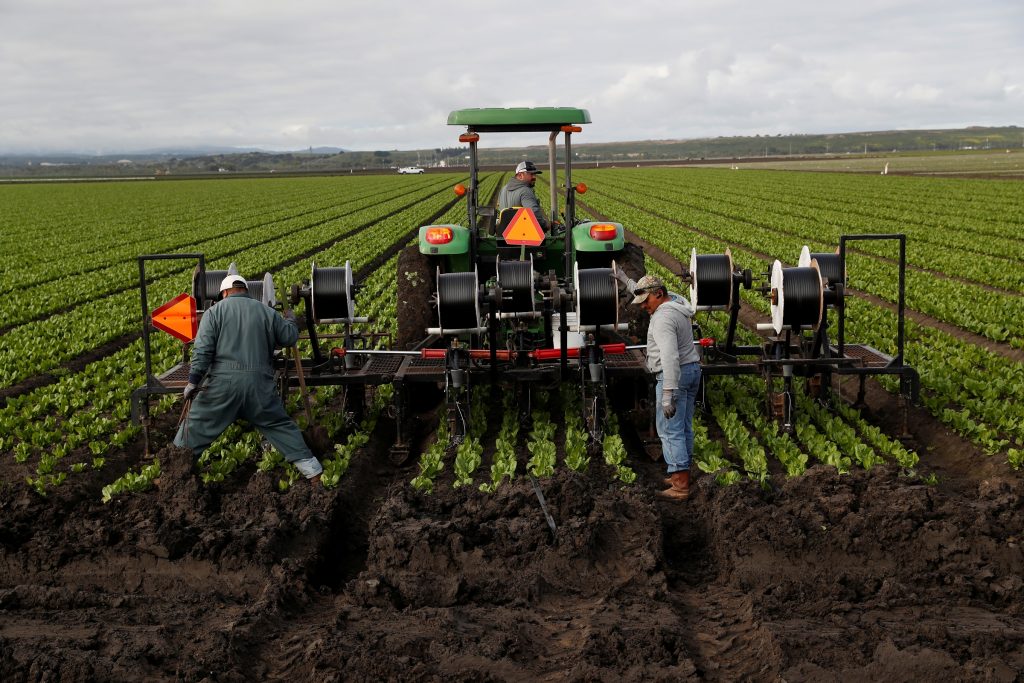For the Oct. 30 - Nov. 7 special election issue of Angelus, we asked a handful of Catholic thinkers to offer their thoughts on the issues that American Catholics should care about for the next four years, independent of the candidates or political party that govern after the Nov. 3 elections.
Each day starting Oct. 27, one of the seven essays from our guest contributors will be published on AngelusNews.com.
A year ago, the economic forecast for American families was like one of those sunny Southern California evenings that gives you a warm, easy feeling about the future.
The median household income had reached an all-time high of $68,700, according to the U.S. Census Bureau. Household earnings and labor-force participation were increasing, the official poverty rate had fallen to an all-time low, income inequality was falling, and all racial and ethnic groups were seeing their economic fortunes improving.
Then a once-in-a-generation storm rolled in.
As the nation tries to get a handle on the ongoing cultural and economic impact of the coronavirus (COVID-19) pandemic, the incoming Congress and next administration will face no shortage of problems to get things back on track.

Ever since the initial lockdowns and stay-at-home orders went into effect in the spring, economists and policymakers have been hoping for a short halt followed by a quick rebound: a “V-shaped recovery,” in economic shorthand.
Instead, the continued spread of the virus, and the disparate impact it is having on different social classes, means some economists are seeing a “K-shaped recovery.”
The upper branch of the “K” is made up of those with enough resources to insulate themselves from the worst of the damage: professionals with the ability to work from home, families with savings to tap, and parents who can afford private schools when their public school remains closed.
The lower branch of the “K” consists of everyone from low-wage service workers who have seen hours cut, to parents who have to cut back hours because they have no child-care options, to the millions of workers who have lost jobs due to the immediate and ongoing effects of COVID-19.
It is these households that deserve to be the focus of elected officials’ efforts as the calendar turns. As Pope Francis said in “Laudato Si’” (“Praise Be to You”) and reminded us in “Fratelli Tutti,” “to claim economic freedom while real conditions bar many people from actual access to it, and while possibilities for employment continue to shrink, is to practice doublespeak.”
States and localities are facing tight budgets thanks to decreased tax revenues, and nothing can match the spending power of the federal government’s purse. With federal policymakers seemingly unable to agree on another coronavirus aid package before the end of the year, the beginning of next year could, depending on the result of November’s elections, see a large legislative package.
Assuming the next administration will work with the next Congress, that package could include another round of economic stimulus checks or increased tax relief, additional support for schools, state and local government, health care systems, and expanded support for child care, and other measures aimed at helping working families.
Whatever this package looks like, it will be essential for officials to remember the vast diversity in experience and situations across the U.S. Not every family is looking for federally subsidized child care; nearly 1 in 5 parents choose to stay home instead of enter the labor force.
Not every family will benefit equally from increasing funding for public schools. Surveys show more than half of parents would support plans to use government funds to allow children to pay for tuition in private schools.
Families want help paying for big expenses like health care and small ones like formula and diapers, but they don’t necessarily want to see big government programs in order to make that happen.
Policymakers should prioritize increasing the choice set facing families, with a preference for getting resources to families on the lower branch of the “K.”
This requires creative thinking, a willingness to explore other mechanisms aside from the tried-and-true, and a recognition that what is appropriate for getting households back on their feet amid a global pandemic may look very different than what would be appropriate in more normal times.
Again, Pope Francis reminds us: “A truly human and fraternal society will be capable of ensuring in an efficient and stable way that each of its members is accompanied at every stage of life.”
Last year at this time, there was nary a cloud on the horizon. All signs pointed to labor markets that drew workers off the sidelines, increasing take-home pay for families and providing upward mobility for households all across the income spectrum.
It had been almost two decades since we had seen our economy work to this degree, and there is no shortage of painful “what ifs” of how a worker-friendly labor market could have boosted more families’ prospects. The body blow of the pandemic came just when we started to see the potential of a fully humming economy.
The first order of business will be getting the virus under control. Once it is — God willing, soon — attention will turn to restarting the economy and hopefully recapturing the momentum that had seemed so promising for poor, working-class, and middle-class families, and hopefully will be again.

